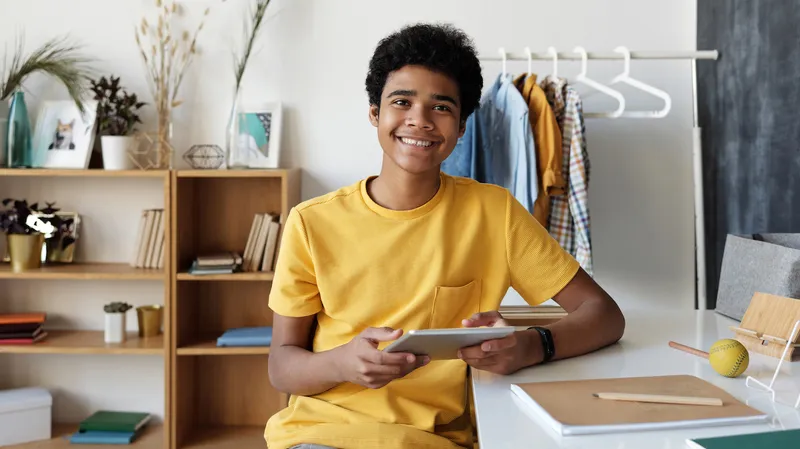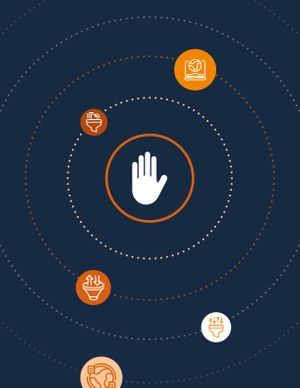
Why are content filtering solutions necessary in education?
The rise of technology-enhanced education, from remote learning environments to the digitally connected classroom, carries potential for students to learn in new ways. Some even productively blur the boundaries between school and daily life. But educational institutions that implement these new learning models must be proactive about defending students from the dangers that accompany them. Students with unrestricted internet access are likely to encounter dangerous and/or inappropriate content. They are also likely to be exposed to predators, cyberbullies and hackers. Some have difficulty staying focused on education when confronted with distractions such as gaming and social media.
Taking steps to protect students on the internet is also increasingly a legal necessity. In the United States, the Children’s Internet Protection Act (CIPA) imposes requirements on schools and libraries that receive discounts for internet access or internal connections through a government program. These requirements include educating students about internet safety and digital citizenship as well as monitoring their activities online. The United Kingdom has issued statutory guidance calling for similar practices and many educational institutions around the world have regulatory requirements for students’ internet use.
Protecting students is a priority that we should all be able to agree on. But strict surveillance and granulated reporting doesn’t necessarily have better outcomes. Increasingly, experts are warning that some of the measures commonly offered by technological solutions can cause harm.
When does monitoring student internet use go too far?
Some technological solutions designed to keep students safe online track their individual activity and compile reports that are available to teachers or administrators in educational institutions. Educational institutions may assume that effectively protecting students from harm should include collecting this information for remediation and discipline. From the parents’ perspective, though, it may be unclear who has access to details about their children’s online lives and who they are sharing the information with. They may also be unclear about whether their children are still being monitored at home when they use school-issued devices after school hours. The transparency around what data is being tracked when and where seems to be lacking.
Risks to students resulting from surveillance
A research report published by the nonprofit Center for Democracy and Technology (CDT) confirms the prevalence of technology to keep students safe online. 81% of respondents said that their schools used software to monitor student internet use, and only one in four said this monitoring was confined to school hours. This report raises the question of whether lower-income students are disproportionately impacted by monitoring, given that they are more likely to use school-issued devices at home for personal use. Efforts to narrow the “digital divide” are unlikely to succeed if underprivileged students fail to gain trust in technology.
Knowing that they are under surveillance can carry a negative impact on students’ morale and prevent them from accessing beneficial resources. LGBTQ+ students may restrict their internet use out of fear of being outed or even exposing their families to legal consequences. This can have dire consequences for them. The 2021 National Survey on LGBTQ Youth Mental Health found that LGBTQ+ youth who had access to spaces that affirmed their sexual orientation and gender identity reported lower rates of attempting suicide than those who did not, and 69% found these spaces online. Only 50% found LGBTQ+-affirming spaces in school and only 34% at home.
And students dealing with mental health challenges may decline to reach out for the resources and help they need if they feel unable to do so privately. Far from protecting students, individualized surveillance and reporting can hold them back from positive interventions and have a disempowering effect.
Wired Magazine recently pointed out the potential harm schools cause if sharing information on student internet use with outside parties such as police departments. A problem that might have been addressed at the level of an internet use policy or a disciplinary intervention can escalate into a matter for law enforcement, exposing students to legal jeopardy and expanding the school-to-prison pipeline.
Harm to social-emotional learning (SEL) outcomes
A common background to all these observations is the idea that knowing they are under surveillance will keep students from engaging as deeply with schoolwork or expressing themselves as openly as they otherwise would. They may feel disrespected and even fear reprisal for accessing the wrong kind of information or voicing a controversial opinion. This oppressive environment will certainly have a negative impact on their social-emotional learning and keep them from achieving their full potential as learners.
What should we do instead to keep students safe online?
Fortunately, it is possible for a technological solution to provide the benefits of monitoring internet use without exposing students to the above risks and detrimental effects. One of the key ingredients of this approach is anonymizing individual student information. This allows administrators to view reports about online behavior and threats in order to adjust policies without connecting this data to any one student. A solution that anonymizes data to protect student privacy while collecting the information that administrators need to adjust policies is the best option for following the law and encouraging positive learning outcomes. While schools may state that granular monitoring of student internet use is required for CIPA compliance, CIPA actually states that nothing in the law requires the tracking of internet use by any identifiable minor or adult user.
The Jamf Safe Internet difference
Jamf believes in transparency and user trust: our users should feel that they can work independently without worrying about violations of their privacy. Our “privacy over inspection” approach has informed the design of Jamf Safe Internet, our solution for content filtering and endpoint protection in education. Optimized for educational uses and integrated with our mobile device management (MDM) solutions, Jamf Safe Internet keeps students from accessing harmful and inappropriate content without spying on them.
Wielding functionality from Jamf Protect, Jamf Safe Internet offers category-based content filtering with a database that includes a vast number of domains to identify and block websites featuring unwanted content types such as gambling, tobacco, extreme politics, pornography and more. Social media and gaming outlets that distract students from learning can be made off-limits, and administrators can restrict high-bandwidth activities that slow down other users and often represent inappropriate uses of school-issued devices.
Jamf Safe Internet offers two levels of reporting: one providing details on blocked URLs and another identifying malware and other malicious threats. Beyond blocking inappropriate content, its endpoint protection functionality powered by the machine learning and threat intelligence engine MI:RIAM protects students from malware, phishing attempts and spam.
Making students feel safe and respected
Educational institutions have a responsibility to keep students safe online. Employing a solution like Jamf Safe Internet makes it easy to monitor their internet use without invading their privacy or exposing them to unnecessary risks . Students who are not surveilled will feel autonomous and respected, working harder and putting more of their authentic selves into the learning process. Using technological products that strike the right balance among safety, privacy and transparency are key to creating the safe and trusting learning environment we all want for children.
Subscribe to the Jamf Blog
Have market trends, Apple updates and Jamf news delivered directly to your inbox.
To learn more about how we collect, use, disclose, transfer, and store your information, please visit our Privacy Policy.



